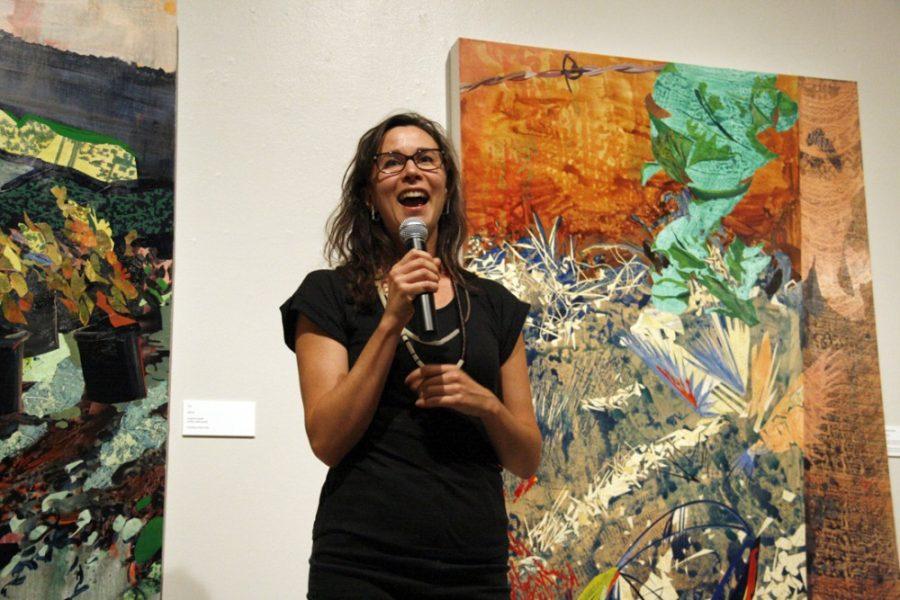Eva Struble is a nationally renowned painter recognized for her beautiful acrylic and oil-based works. Originally from New York, she moved out West to teach painting at San Diego State University. In San Diego, she became interested in exploring the dynamics of the Southern California agricultural industry. “Produce” is Struble’s latest project, where she uses acrylic painting and screen-printing to create a powerful narrative about the people who grow our food. The Joseph Gross Gallery at the UA School of Art will host the “Produce” exhibit from now until Nov. 6. Struble sat down with the Daily Wildcat to talk about her art.
Daily Wildcat: What inspired you to start “Produce”?
Struble: Since I moved to San Diego, I wanted to learn about labor and immigration especially related to agriculture. I wanted to find a way to get to know that land, people and cultural landscape of the area. This was sort of an exploratory project to understand San Diego.
Where did you look to find inspiration for the project?
One of the places that I started was the library, where I was looking at old images of the agricultural bounty of Southern California. I found images of fruit labels that are so beautiful and cheerful but … look quite ironic today, because they can be overtly racist. That led me to the pictures of the agriculture and the county fairs, and I wanted to see how that has changed today. I think I was curious about physically going to the place where it happens and [seeing] what it looks like today compared to the nostalgic history.
What drew you to the library to start your research for the project?
I think part of me just enjoys school and having to go to the library and having to go through old documents. The writing part in front of the computer for hours isn’t as fun as painting, though. I did a different group of works on the Brooklyn Navy Yard where they built a lot of the ships during World War I and World War II. With that project, I listened to interviews from women who worked for the first time who joined the labor force because of the war. They talked about flirting with the marines and having jobs in industry. Getting that personal narrative about them, that normally seems so historical, was fascinating.
What advice do you have for aspiring artists?
Working hard sounds obvious, but you need to find the energy through something that you love. Not only making yourself work hard but also channeling it into the right project for you.
What advice do you have for someone who wants to become interested in the art world but has no idea where to start?
I think it’s important to hear an artist speak about their work. A lot of art is hard to access or understand it without hearing someone talk about it. Being able to find a local artist talk is a nice way to do it. Go to open studios at MFA programs, because then you really get to talk to people one by one, and if you are interested in buying some work, it’s fairly affordable.
—Follow Patrick O’Connor @tachyzoite









